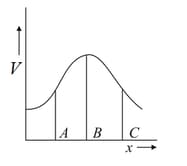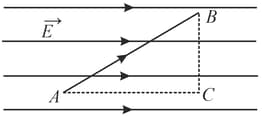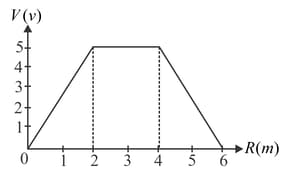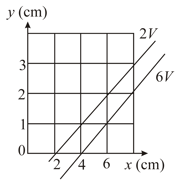Variation of electrostatic potential along the -direction is shown is figure. The correct statement about electric field is



Important Questions on Electric Potential
In moving from to along an electric field line, the work done by electric field on an electron is If are equipotential surfaces, then the potential difference is

An electron is taken from point to point along the path in a uniform electric field of intensity . Side and side . Then the amount of work done on the electron by us is

The variation of potential with distance from the fixed point is shown in figure. The electric field at is,

Figure shows two equipotential lines in the plane for an electric field. The scales are marked. The -component and -component of the field in the space between these equipotential lines are, respectively,

